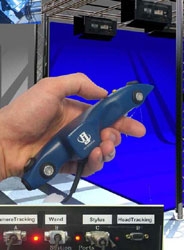 |
Abstract: Visualization and Analysis of Occlusion for Human Jaws Using a Functionally Generated Path
Karol Myszkowski, Jens Herder, Tosiyasu L. Kunii, and Masumi Ibusuki.
Visualization and Analysis of Occlusion for Human Jaws Using a
Functionally Generated Path, IS&T/SPIE Symposium on Electronic
Imaging, Visual Data Exploration and Analysis III, The
International Society for Optical Engineering, 1996
Dynamic characteristics of occlusion
during lower jaw motion are useful in the diagnosis
of jaw articulation problems and in computer-aided
design/manufacture of teeth restorations.
The Functionally Generated Path (FGP), produced as a surface which
envelops the actual occlusal surface of the moving opponent jaw,
can be used for compact representation of dynamic occlusal relations.
In traditional dentistry FGP is recorded as a bite impression
in a patient's mouth.
We propose an efficient computerized technique for FGP reconstruction
and validate it through implementation and testing.
The distance maps between occlusal surfaces of jaws,
calculated for multiple projection directions and accumulated
for mandibular motion, provide information for FGP computation.
Rasterizing graphics hardware is used for fast calculation of
the distance maps. Real-world data are used:
the scanned shape of teeth and the measured motion of the lower
jaw. We show applications
of FGP to analysis of the occlusion relations and occlusal
surface design for restorations.
|
 |
